Dandelions (Taraxacum officinale) are one of those plants that people generally either hate or scarcely notice at all. While they produce cheerful yellow flowers and “puffballs” of floating seeds that fascinate young and old, for some reason they’re stereotypically the scourge of The Great North American Lawn.
They may be “weeds,” but dandelions nourish pollinators and serve as food to deer, rabbits, squirrels, and even (reportedly) bears. They’re nutritional when eaten by humans and can be used to make medicinal teas or book-inspiring wines.
The name “dandelion” is interesting, as it is originates in the French dent de lion, or lion’s tooth. This makes more sense when looking at the leaves.
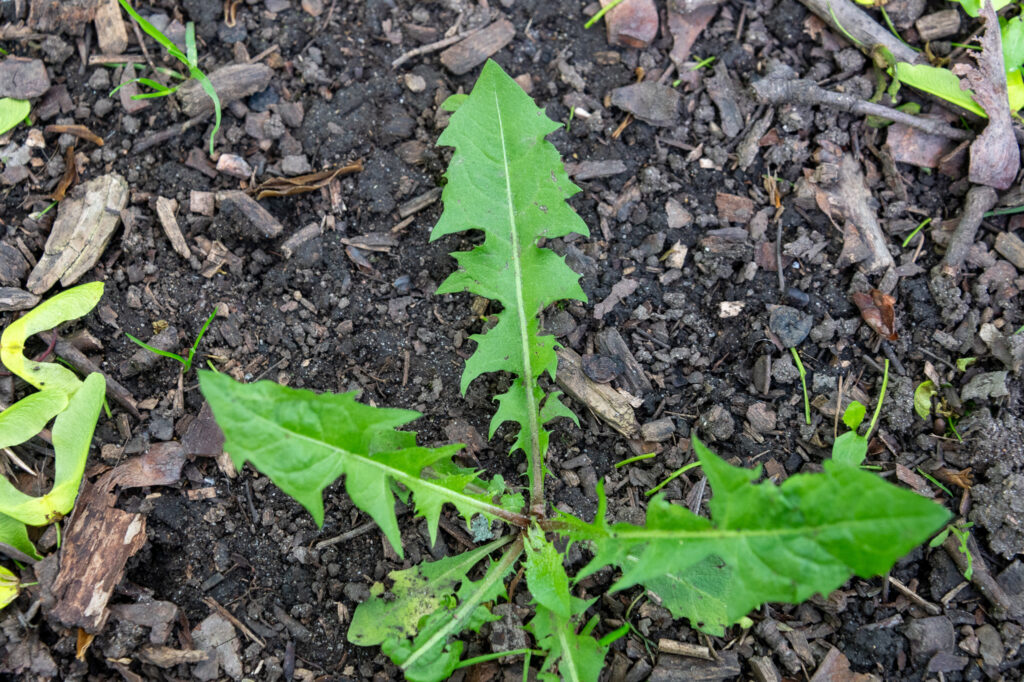
Ironically, the common name in French is pissenlit (i.e., piss-in-bed), variously explained as coming from the yellow color of the flowers or the diuretic properties of dandelion tea.
The basic characteristics of dandelions (milky-sapped hollow stems, toothed or deeply lobed leaves, yellow flowers, and spherical seed heads with tufted seeds) are shared by a number of plants. Coltsfoot (Tussilago farfara), Cat’s Ear (Hypochaeris radicata), Meadow Hawkweed (Hieracium caespitosum), Autumn Hawkbit (Scorzoneroides autumnalis), Narrowleaf Hawksbeard (Crepis tectorum), Beach False Dandelions (Agoseris apargioides), Sow thistle (Sonchus oleraceus), and others share all or many of these attributes. They must represent successful strategies!
Anyway, while the stereotypical suburban North-American home has a grumpy old guy who is obsessed with ridding the lawn of dandelions before they can produce seeds, this doesn’t appear to extend to Montreal. The parks are full of them.
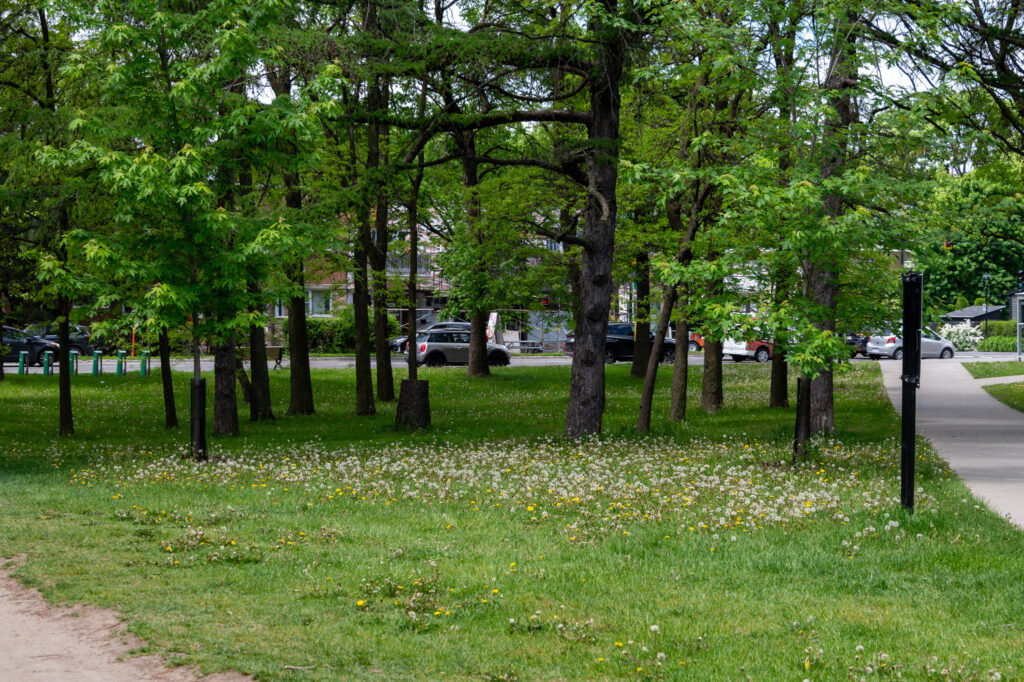
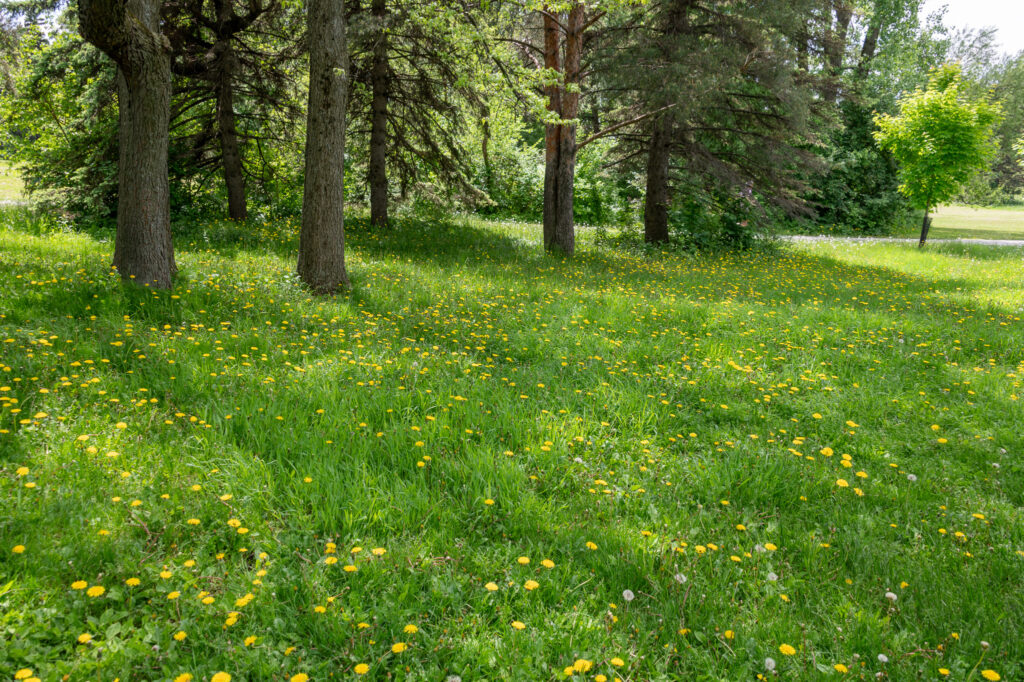
I don’t know if it’s been an extra-productive year, or if I just hadn’t noticed in prior years, but there have been a lot of dandelions in Montreal this year. No, really, a whole heckin’ lot of them!
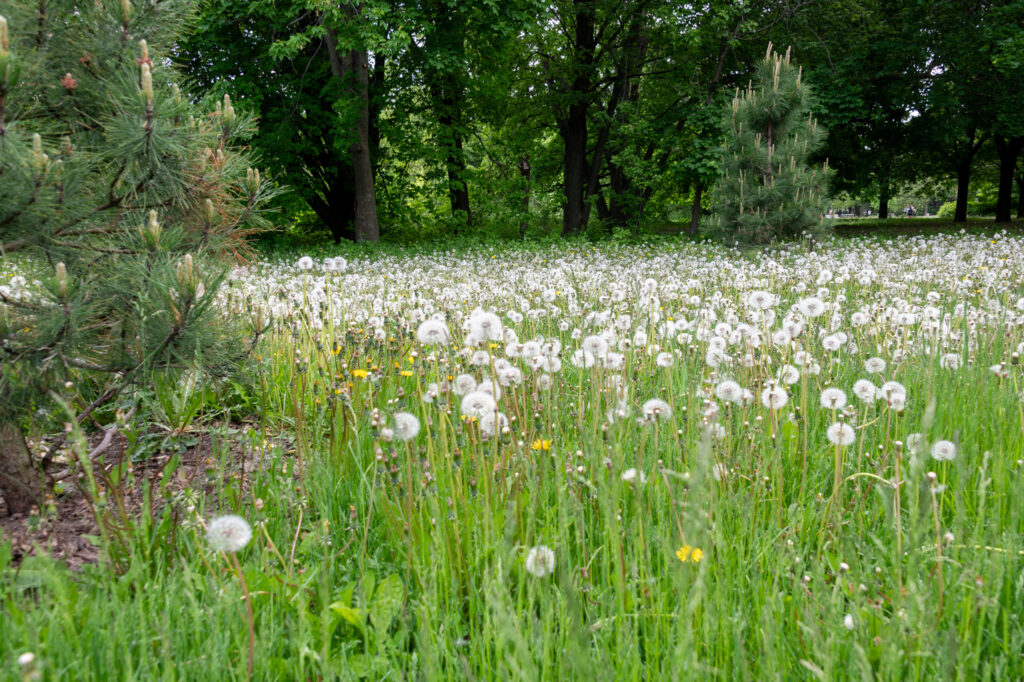
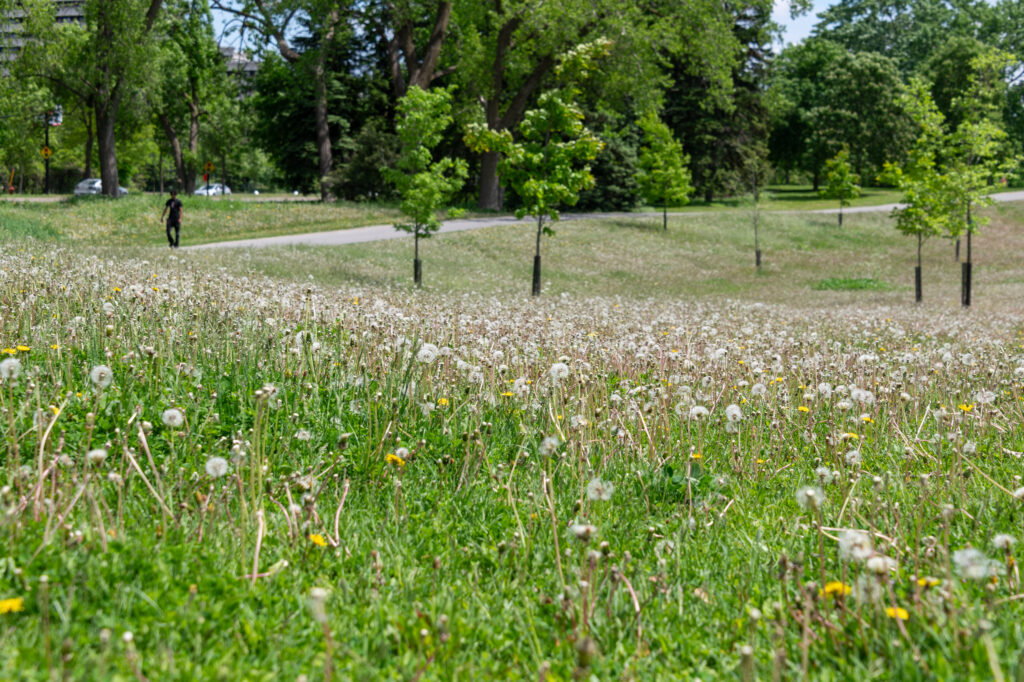
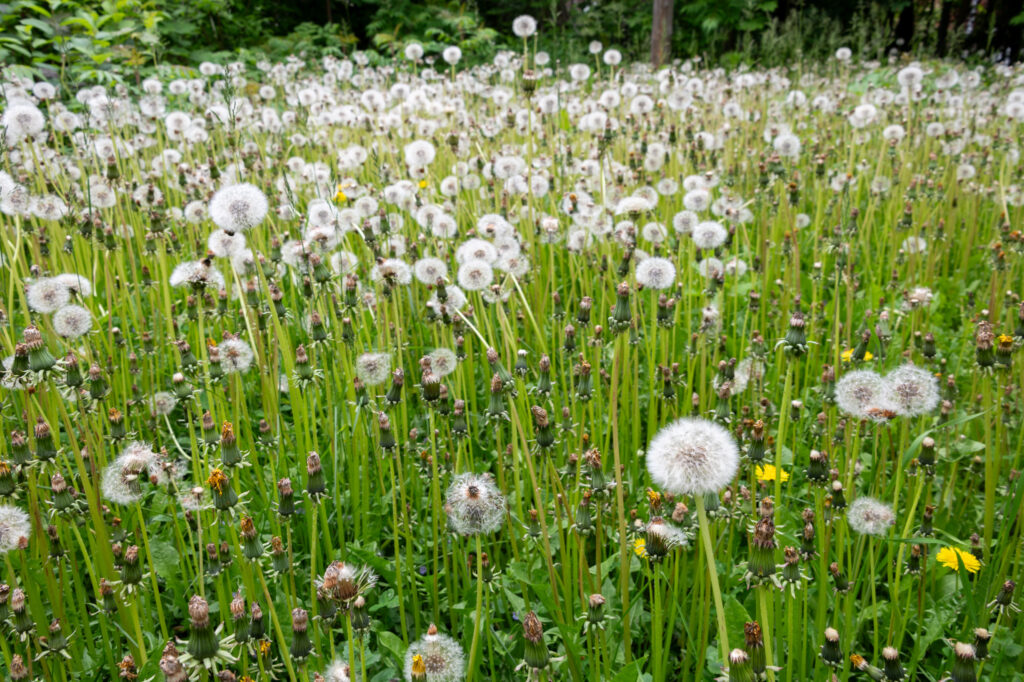
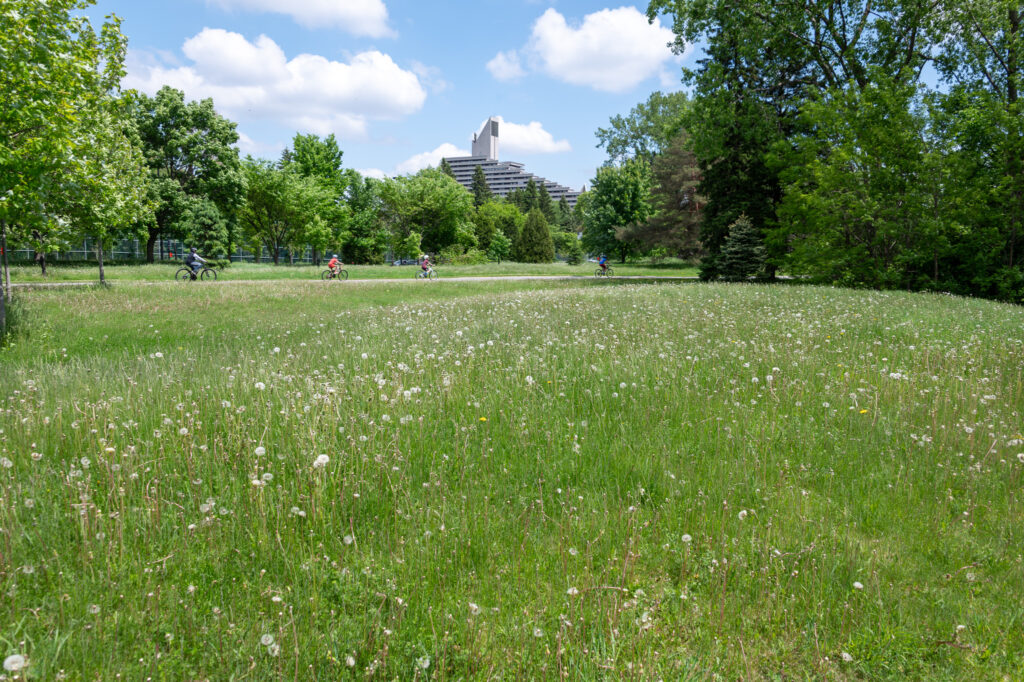
Earlier this week, I noticed that the city was starting to mow the lawns in the parks. In Parc de la Louisiane, there were interesting swaths left un-mowed, most along boundaries and paths, but some out in the middle of fields. I wondered if this was to leave the flowers intact for pollinators. But upon visiting a day or two later, I discovered no, this had just been a matter of doing the easy bits first.
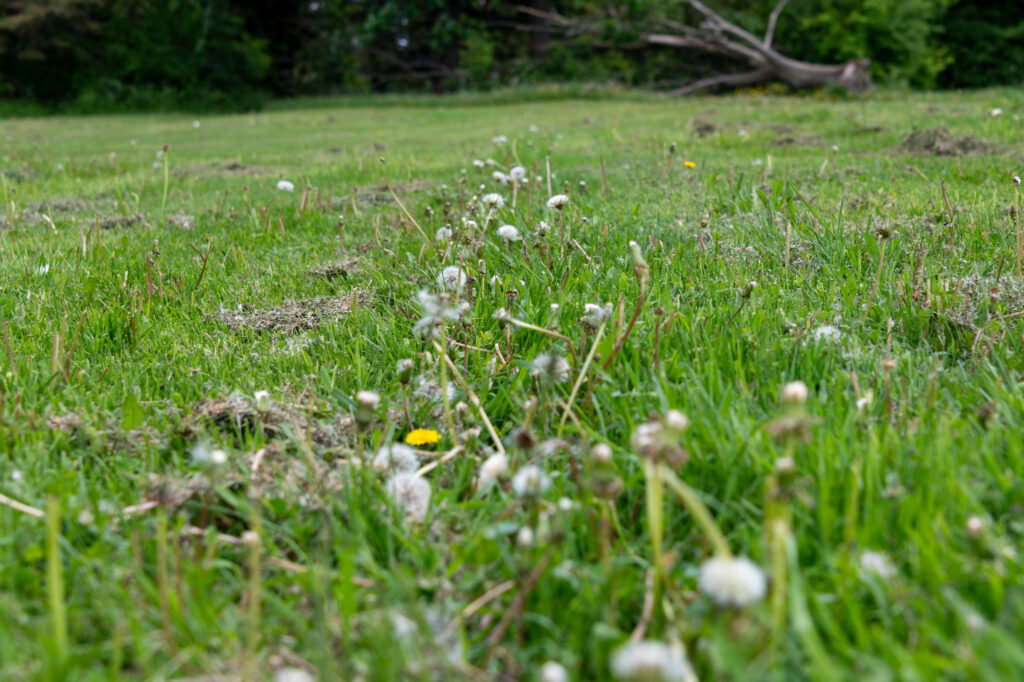
Similarly, in many areas where they had mowed, they left behind the cut grass and dandelions and didn’t sweep them up. I don’t know if that is to leave the clippings as nutrients, or if they’ll be swept up later.
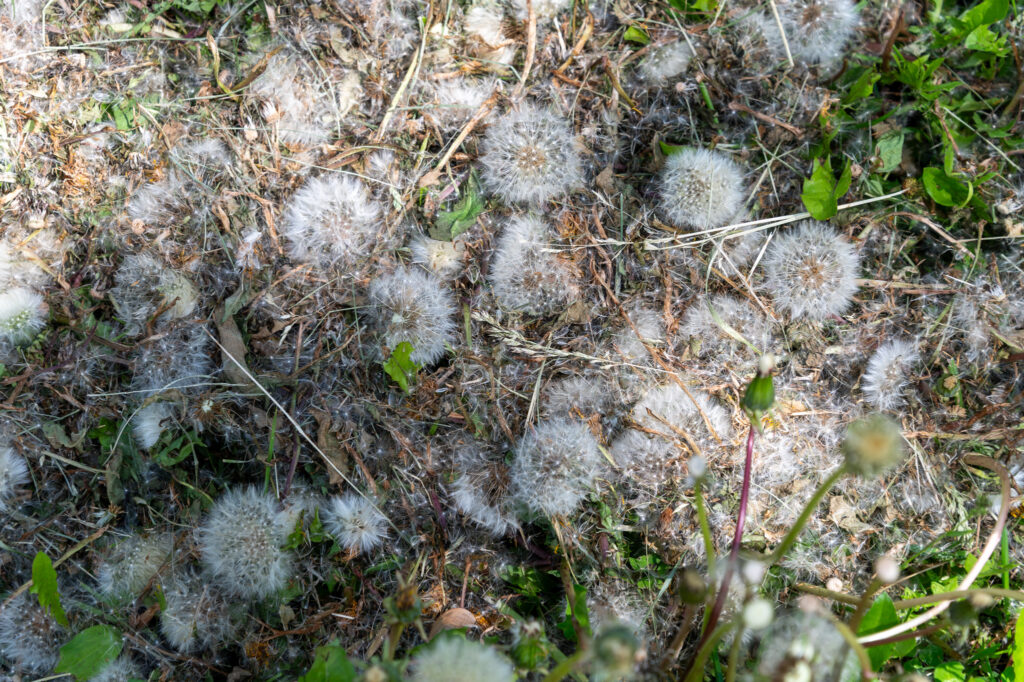
In the larger Parc Maisonneuve, there are still some areas that are not mowed. Are these also the challenging areas, fated to be visited again by the lawnmowers?
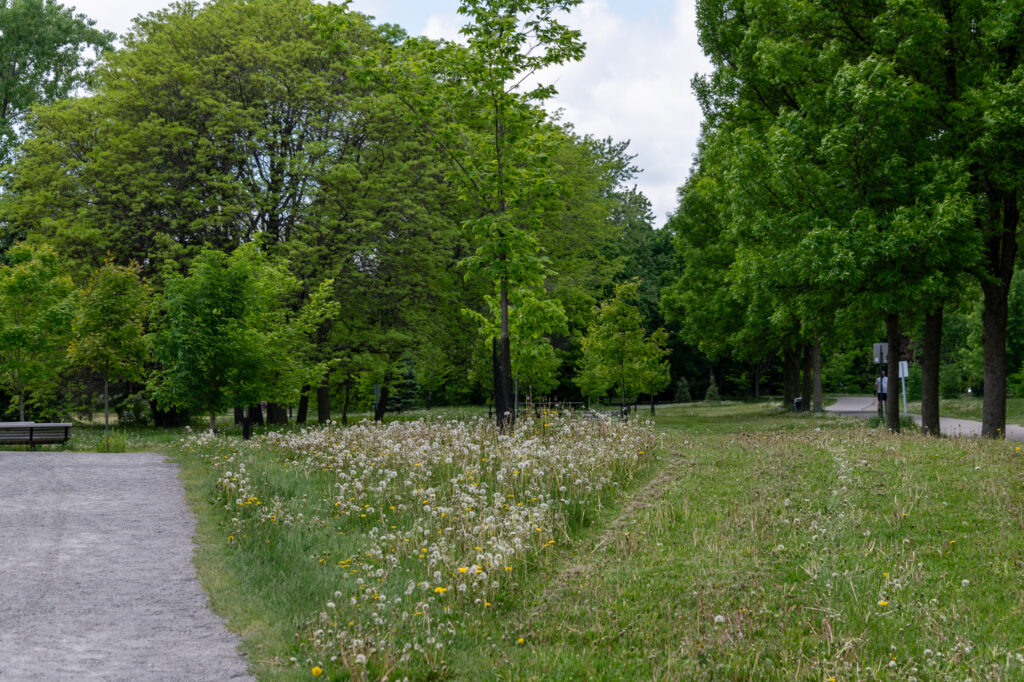
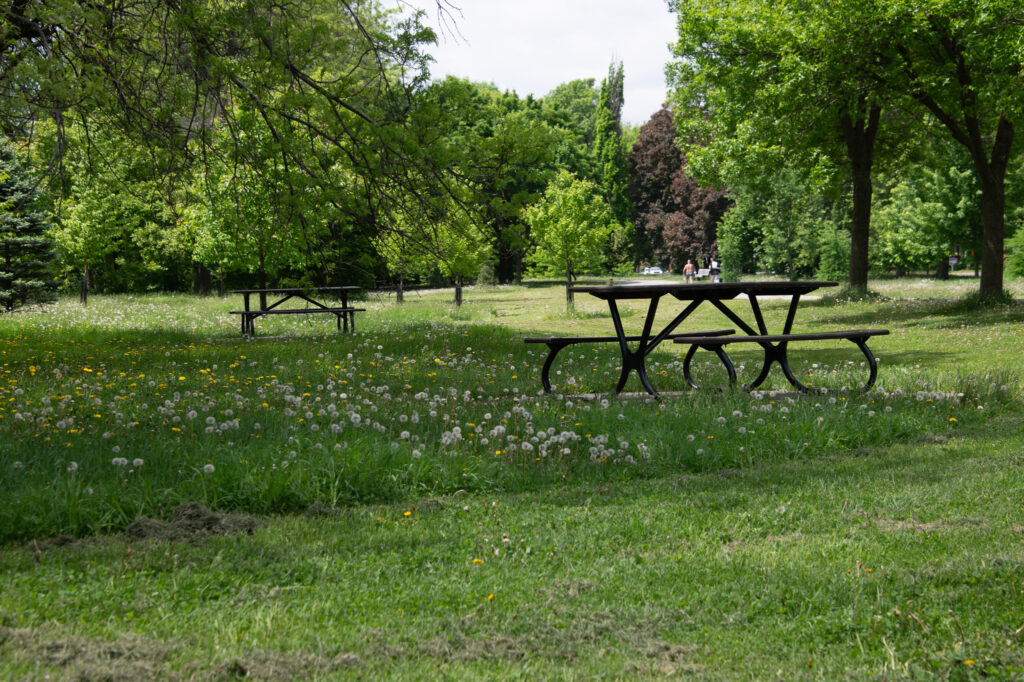
While sitting at this picnic table, looking over the acres of white dandelion puffs, I grew curious. Each puffball (which Wikipedia tells me are called “clocks” or “blowballs”) has many seeds. But how many?
So I deconstructed a few. I counted 78 from one, 84 from another, and 109 from a third. So if I round off and use order-of-magnitude, that’s 100 seeds/flower. This means that the greater park, where I counted exactly 947.4 bajillion flowers, has … uh … a lot of seeds!
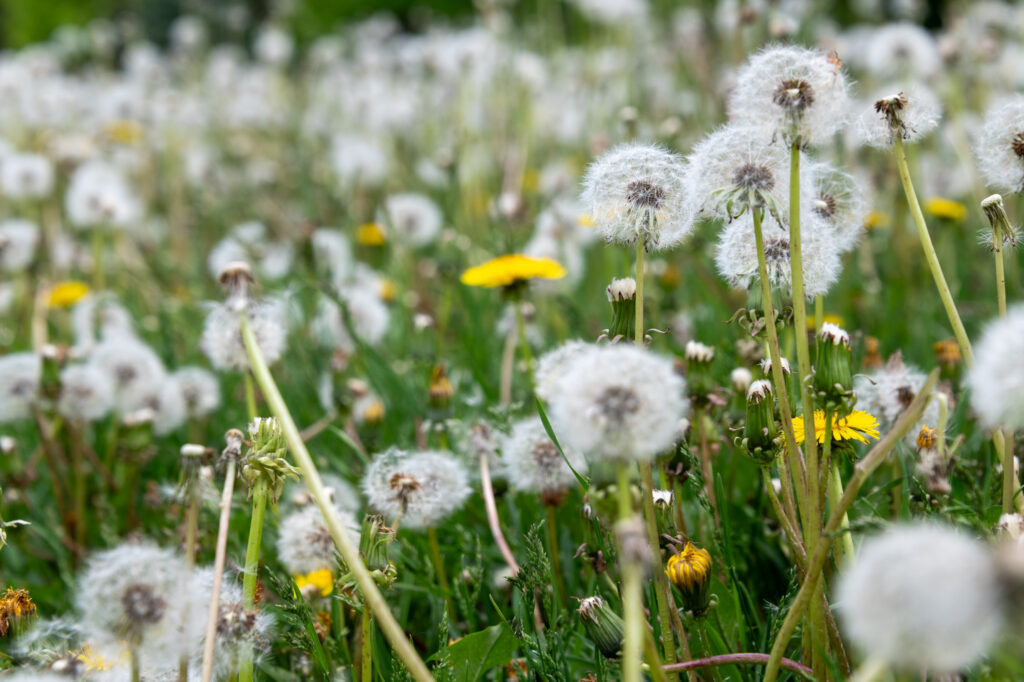
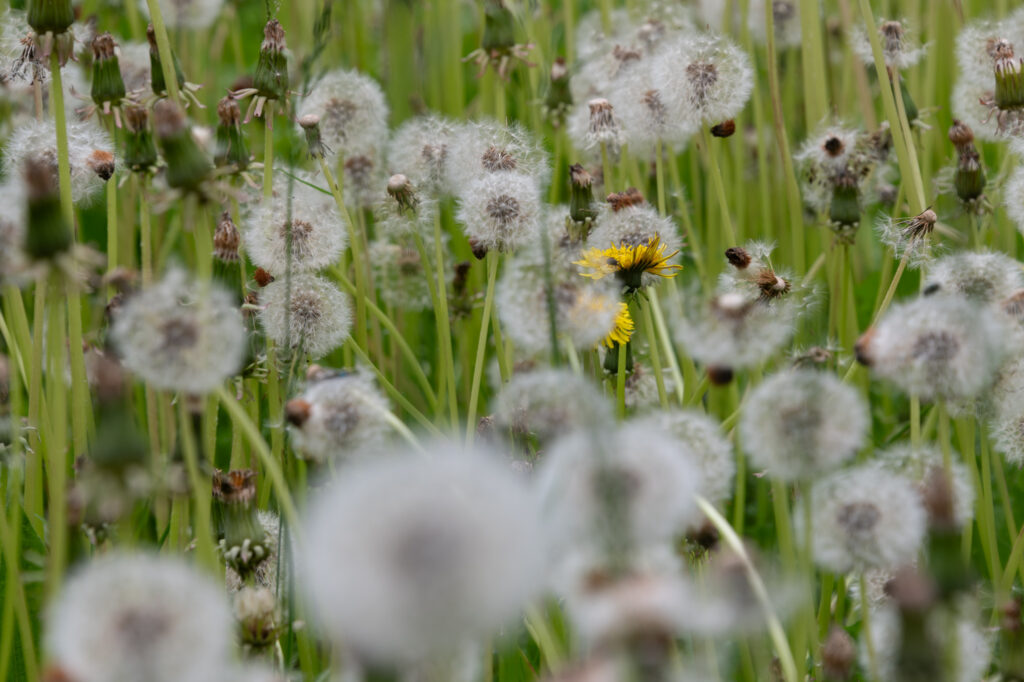
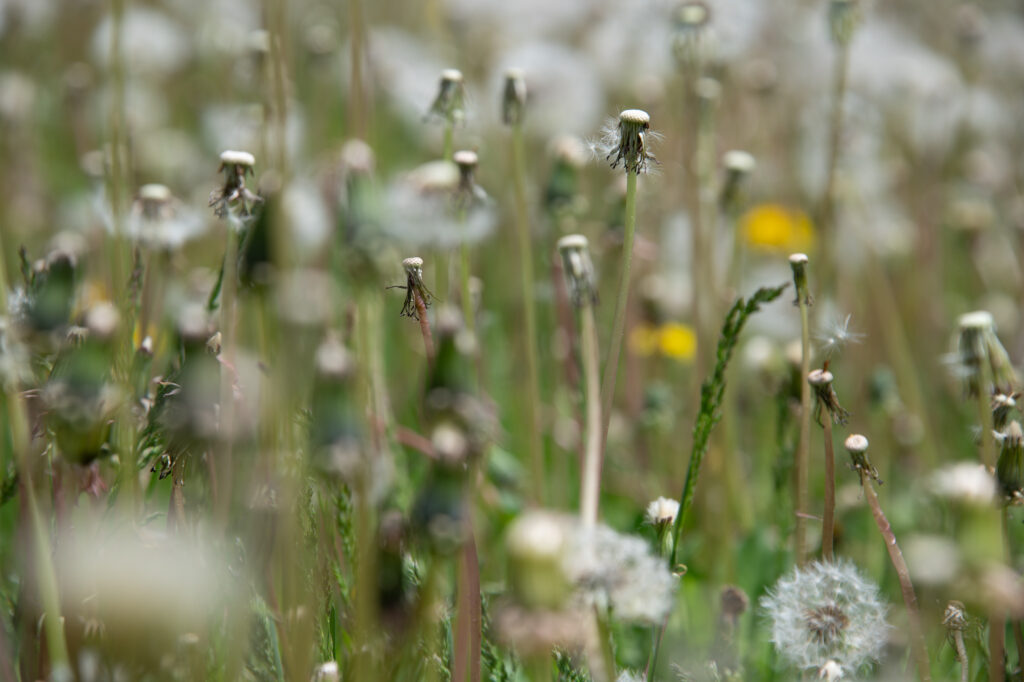

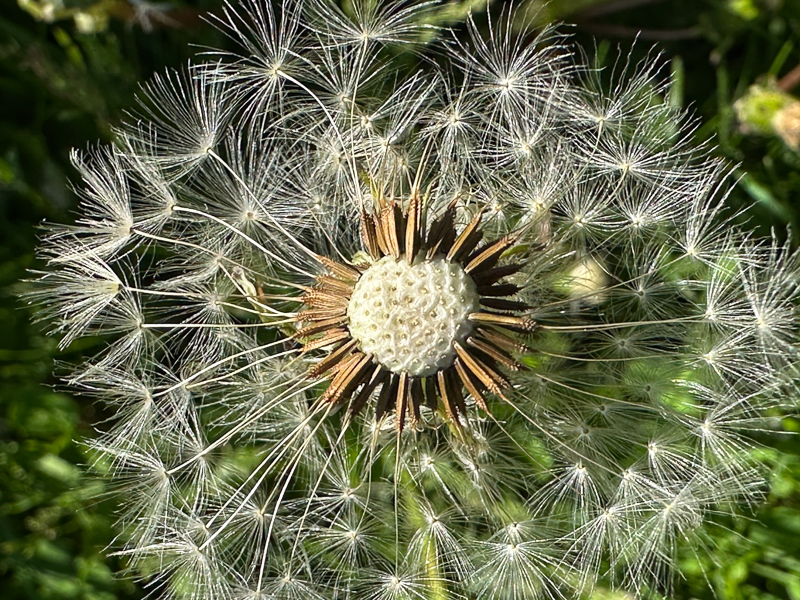
One reply on “Consider the Dandelion”
I’ve always liked dandelions. They were everywhere where I grew up, too. It’s “tanpopo” in Japanese. Yup, the title of the well-known movie.